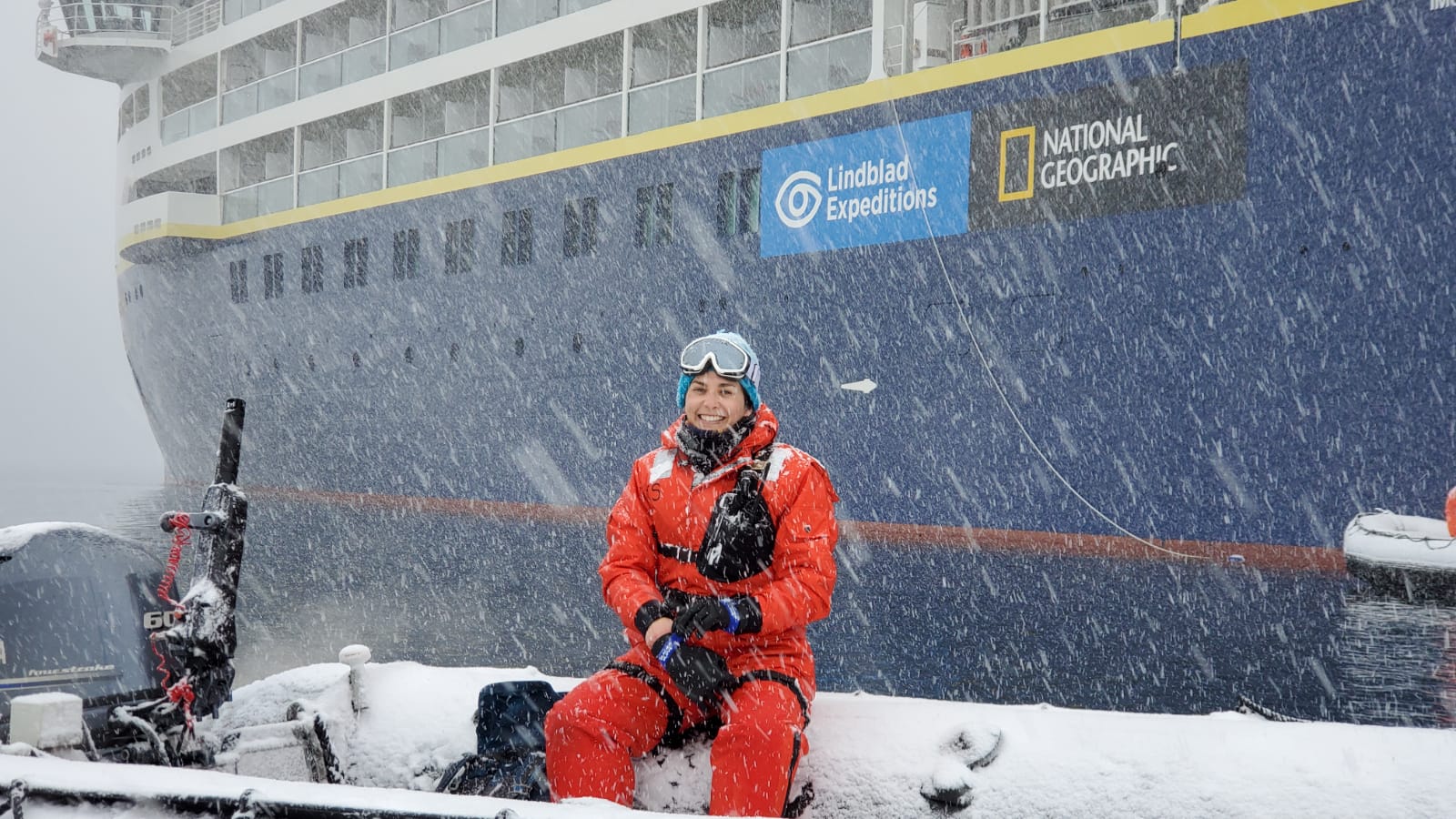After witnessing one of the first-ever documented supergroups of whales, Institute for Marine and Antarctic Studies (IMAS) student Maya Santangelo is fighting to shine a light on the dangers of concentrated krill fishing in Antarctica.
After what started as a regular day off the coast of Antarctica travelling through the majestic South Orkney Islands, the crew came across one of the biggest supergroups of whales ever documented.
Over 1,000 fin whales (and blue and humpback), penguins, seals and seabirds had converged to feed on a rich bloom of phytoplankton.
The rare sighting floored the crew on board, who were captivated by what was in front of them – a career highlight for many of the scientists to see a group that size.
For a moment, they reflected back to a time when the grand species swam and congregated without the looming threat of commercial whaling and fishing.
Not too far off in the distance were four vessels actively fishing through the whales, trawling for tonnes of Antarctic krill (the whales’ primary food source), and putting these endangered creatures at risk.
“We often talk about human exploitation of wildlife in Antarctica in a historical context, and we think of Antarctica as a pristine place that countries around the world have agreed to leave alone for peace and science,” Maya posted on her Instagram alongside footage of the event.
“That’s unfortunately not the case for the surrounding waters.
“These vessels are capable of catching approximately 1,000 tons of krill a day, and this fishing activity is completely legal.
“On paper, these numbers for management are conservative and precautionary. But the catch of krill each year is not only increasing, it is extremely concentrated in the space it is taken from.
“You might be thinking all those whales are taking lots of krill too, what’s the big deal? Whales are part of the nutrient cycling system.
“Whales eat krill, whales digest krill, whales poop, which fertilizes the waters around them, which stimulates the growth of phytoplankton, which krill feed on, which the whales eat, and so on.
“The fishing boats, on the other hand, take the krill out of the water and give nothing back.”

Maya balances completing her master's degree at the University's IMAS campus in Hobart while also working as an Undersea Specialist and Expedition Diver for Lindblad Expeditions. She has spent four seasons down south.
Maya and her colleagues’ research is soon to be published in the peer-review journal, Ecology.
They’re using this platform to highlight the dangers of krill fishing and the impact it has on post-whaling recovery in the Southern Ocean Whale Sanctuary. They’re calling on the Commission for the Conservation of Antarctic Marine Living Resources (CCAMLR) and the International Whaling Commission (IWC) to take action.

You can follow along with Maya's work in and around the ocean via her Instagram @mayasantangelo
Top of page: Maya Santangelo off the coast of Antarctica. Image: Shaylyn Potter.
Thinking about a career in Marine and Antarctic Science? Check out our courses.


